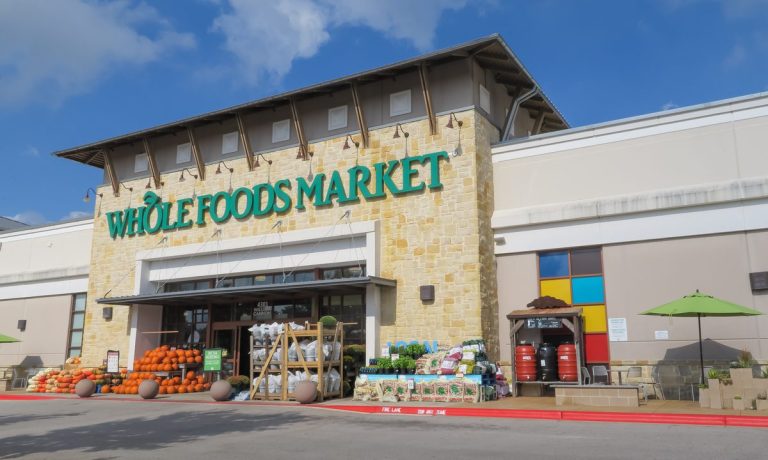Amazon’s ‘Just Walk Out’ Whole Foods Store Opens as Frictionless Checkout Takes Hold

The Whole Foods Market shopping experience just got a major tech upgrade. Nearly five months after Amazon announced its intention to bring its Just Walk Out cashier-less checkout technology to its Whole Foods Market grocery brand, the first such location opened Wednesday (Feb. 23), per a company news release.
Read more: Amazon to Pilot ‘Just Walk Out’ Tech at Whole Foods Locations
The first Just Walk Out Whole Foods Market store, located in Washington, D.C., will be joined later this year by another in Sherman Oaks, California. Additionally, Amazon is also working on extending its frictionless checkout technology into suburban markets through its Amazon Go convenience store brand.
See also: Amazon to Expand ‘Just Walk Out’ to the Suburbs as Grocery Shoppers Demand Frictionless Convenience
Through the system, consumers scan an in-app code or their credit card at the entrance to the store, bag their items as they move through the aisles, and scan out as they leave, with their purchases automatically charged to their accounts.
A range of other brands are trialing similar technologies, with coffeehouse giant Starbucks and United Kingdom grocer Sainsbury’s both partnering with Amazon to power their frictionless stores and with other retailers, such as multinational grocers Tesco and Aldi and convenience chain Circle K turning to other tech providers to offer the same service.
By the Numbers
Consumers seek out checkout options that maximize speed and convenience while giving them control over the process. According to data from PYMNTS’ study “Today’s Self-Service Shopping Journey: The New Retail Expectation,” created in collaboration with Toshiba, over two-thirds of grocery shoppers using self-service checkout report doing so because they believe it is faster than traditional checkout. Additionally, more than half of grocery’s self-checkout users are motivated by a desire to skip the traditional checkout line.
Read more: Consumers Want Self-Service Checkout Options but Rarely Get to Use Them
What Insiders Are Saying
These sorts of technologies can boost many of grocers’ key metrics.
“[Consumers] say that, in the beginning, it feels like stealing, but then you get addicted to the feeling,” Yair Holtzer, vice president of Business Development at computer vision startup Trigo, said in an interview with PYMNTS. “People want the experience to be smooth as possible … You can find hundreds of studies that show that, when the experience of your shopping is better, whether it’s online or physical, then the loyalty of the customer increases, the traffic of visits increases, the size of basket increases … and also the conversion for new customers increases.”
See more: Frictionless Checkout Brings eCommerce Convenience into Stores to Drive Conversion
Additionally, frictionless checkout provides insight into a range of consumer behaviors.
“With a frictionless checkout market, all of a sudden, you can offer a lot more for the guests to meet a data driven demand — what do they want to buy?” Sandeep Satish, head of Levy and E15’s sports and entertainment analytics practice, which powers the frictionless checkout food and beverage shop at the Detroit Lions’ Ford Field stadium, told PYMNTS. “And how do they get it as quickly as possible? … Getting more data on what our guests are spending and where they’re spending it at, and ultimately … [it’s] just a fast way to get the most ordered products.”
See more: Live Event Venues Reduce Audience FOMO With Frictionless Concessions